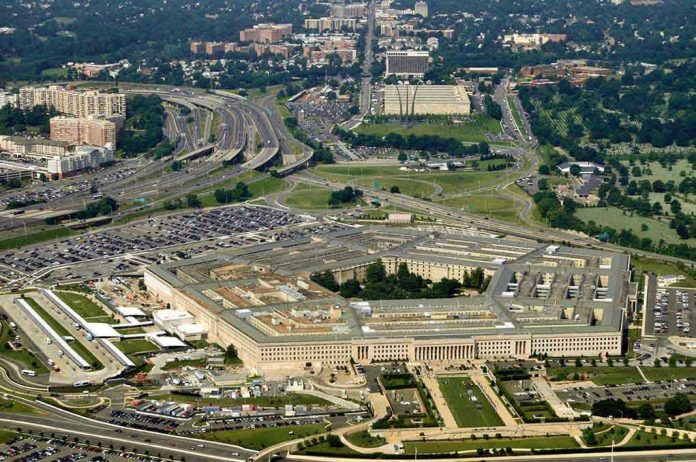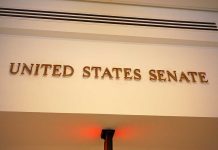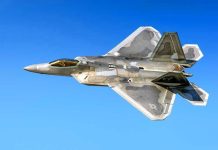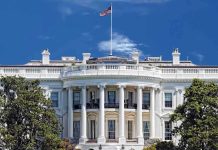
Two U.S. B-1 bombers flew just off Venezuela’s coast, their open transponders and roaring engines sending an unmistakable message: sometimes military theater leaves the world guessing about what comes next—especially when the White House and Pentagon can’t even agree on the script.
Story Snapshot
- B-1B bombers and a U.S. carrier strike group deployed near Venezuela mark the most visible U.S. military pressure on Maduro’s regime in years.
- Official U.S. statements cite counter-narcotics, while analysts see clear signals of potential escalation and political messaging.
- Contradictory White House and Pentagon messages add to the uncertainty and strategic ambiguity of the operation.
- Heightened military posturing increases the risk of miscalculation, regional instability, and unintended conflict.
Washington Ramps Up Pressure in Full View of the World
Two B-1B Lancer bombers thundered across the Caribbean sky on October 23, 2025, tracked in real time by open-source aviation enthusiasts and confirmed by the Pentagon. These were not stealth missions with radar-evading flights; these were brazen, public displays of air power—flanked by KC-135 tankers and an RC-135 intelligence aircraft, their presence unmistakable. The American military’s posture toward Venezuela, already tense, was now as conspicuous as it gets. The following day, the USS Gerald R. Ford Carrier Strike Group steamed toward the region, underscoring the seriousness of the U.S. intent and the risks of confrontation. The White House called the flights a “counter-narcotics operation,” but few seasoned observers accepted that explanation at face value. The real game was about signaling, brinkmanship, and keeping adversaries—and maybe even allies—off balance.
This operation marked the second such bomber show of force in less than two weeks. On October 17, B-52 bombers and Marine F-35Bs had already circled near Venezuela. The message to embattled President Nicolás Maduro was clear: the U.S. military can project overwhelming force, at a time and place of its choosing, and everyone is supposed to see it. Yet the Pentagon’s open acknowledgment—transponders switched on, press briefings held—was paired with President Trump’s public denial, a classic case of strategic ambiguity. This dissonance left the world wondering about America’s true intentions. Meanwhile, Maduro’s government, battered but not broken, rallied nationalist fervor at home while looking nervously toward its few international patrons. The region braced for aftershocks, knowing that in the Caribbean, military gestures can escalate quickly into crisis.
Why Bombers and Carriers? The Layers Behind the Show of Force
The U.S. decision to send heavy bombers so close to Venezuelan airspace, while deploying a carrier group, is not a routine military drill. The B-1B and B-52 are not just symbols—they are assets designed for deep strike and deterrence. Their visible presence, paired with intelligence and refueling aircraft, means this was a carefully orchestrated operation. Officially, the Pentagon pointed to counter-narcotics objectives, citing Venezuela’s alleged role in drug trafficking and the need to disrupt transnational criminal organizations. But defense analysts were nearly unanimous in their assessment: this was military signaling at its most deliberate. The Pentagon wanted to demonstrate that the U.S. can threaten strategic targets, reassure regional allies, and remind the Maduro regime—and its backers in Moscow and Beijing—that American power projection remains unrivaled in the hemisphere.
This tactic fits a historical pattern. From Soviet-era bomber patrols near Alaska to U.S. overflights of North Korea, strategic bombers have long been used for signaling without crossing the threshold into outright war. In Venezuela’s case, the combination of air and naval assets, open acknowledgment, and timing—coming amid a deepening political and humanitarian crisis—was designed to keep every option on the table. Yet such operations always carry risk: a single miscalculation, misunderstood maneuver, or technological glitch could turn theater into tragedy.
Cold Calculation or Careening Toward Crisis?
U.S.-Venezuelan relations have been in freefall since Nicolás Maduro’s contested 2018 re-election, with Washington refusing to recognize his government and instead backing opposition leader Juan Guaidó. The U.S. has used every tool short of war—sanctions, isolation, support for opposition, and repeated military exercises—to squeeze Maduro’s regime. The October 2025 bomber flights represent the most visible escalation in years. On the ground, the Venezuelan military went on alert, and regional neighbors watched nervously as the risk of spillover and miscalculation grew. The humanitarian crisis inside Venezuela—already marked by economic collapse and mass migration—stood to worsen if tensions boiled over.
For Americans, the operation revived debates about interventionism, executive power, and the wisdom—or folly—of saber-rattling in the Western Hemisphere. Some see the flights as prudent deterrence, designed to keep Maduro and his foreign backers in check. Others warn that military pressure has rarely succeeded in forcing regime change, and that visible escalation may play into Maduro’s hands by allowing him to rally nationalist sentiment and paint the U.S. as an imperial aggressor. Americans over 40, who remember the fallout of past U.S. interventions in Latin America, hear echoes of history—and wonder whether this time, the script will end differently.













